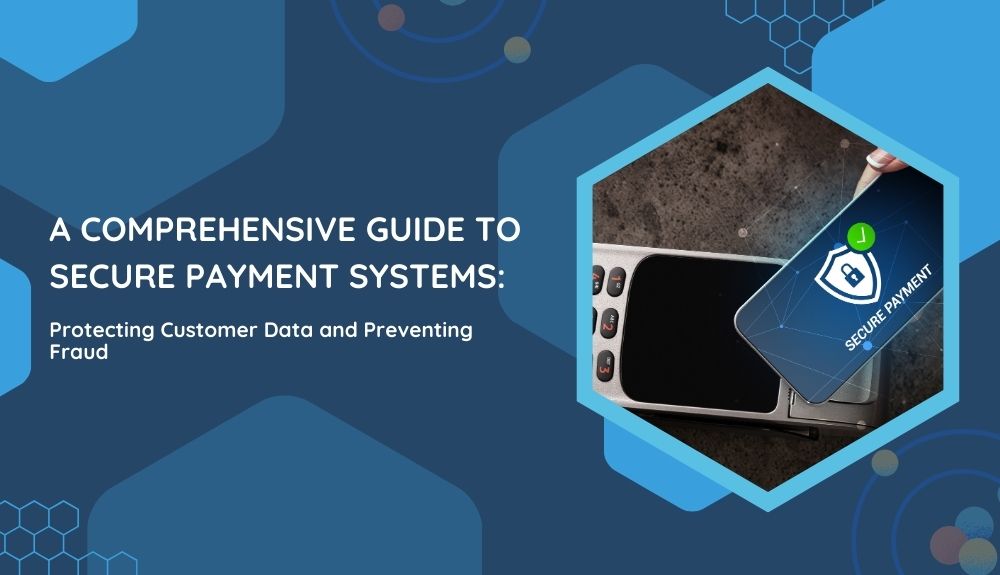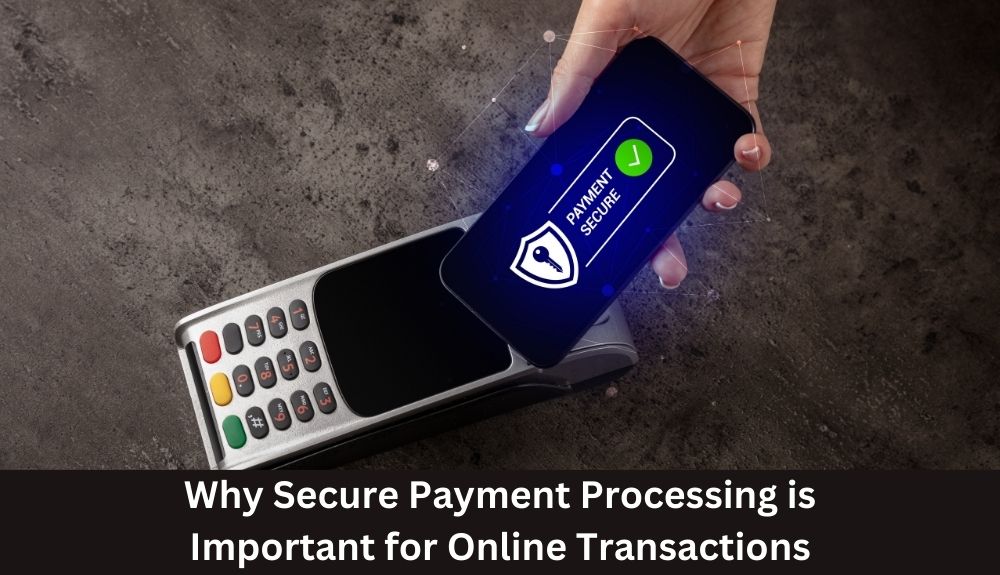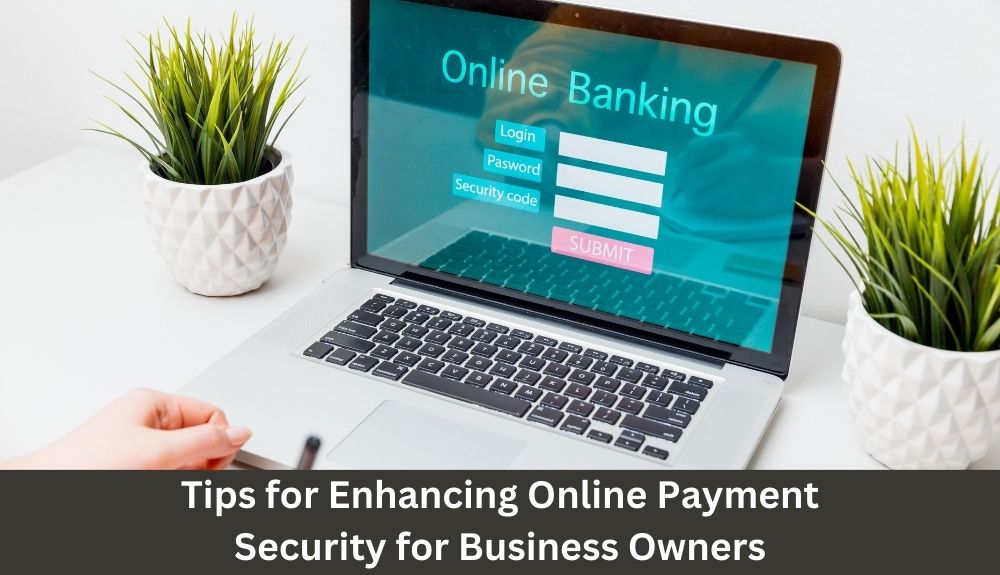
By max February 4, 2024
In today’s digital age, where online transactions have become the norm, ensuring the security of payment systems is of utmost importance. With cyber threats and fraud on the rise, businesses must take proactive measures to protect the sensitive data of their customers and prevent unauthorized access.
Imagine a scenario where a small business owner faces a security breach that compromises the credit card information of their customers. Not only does this result in financial loss and potential lawsuits, but it also shatters the trust and confidence of their clientele.
In this comprehensive guide, we will delve into the world of secure payment systems, equipping you with the knowledge and best practices to safeguard customer data and prevent fraud. From the importance of PCI DSS compliance to the nuances of secure payment technology policies, we will explore everything you need to know to create a trustworthy and secure payment environment.
Join us as we explore the top practices and strategies for protecting your customers’ private data, securing online transactions, and building trust in the digital realm. It’s time to prioritize the security of your payment systems and provide your customers with the peace of mind they deserve.
Introduction to Secure Online Payment Solutions
Ensuring secure online payment solutions is paramount for both businesses and customers in today’s digital landscape. With the increasing risk of data breaches and fraudulent transactions, it is crucial to prioritize the protection of sensitive customer information and prevent unauthorized access.
In this comprehensive guide, we will explore the importance of secure online payment solutions and delve into the top practices for protecting customer data and preventing fraud. By implementing these strategies, businesses can not only safeguard their customers’ trust but also enhance customer satisfaction and ensure a safe and secure online transaction experience.
Throughout this article, we will discuss the definition of secure payment systems, the significance of secure payment processing, best practices for secure online payment processing, the importance of choosing a secure payment provider, various secure payment methods, tips for enhancing online payment security for business owners, successful case studies of secure payment system implementation, and key takeaways for prioritizing secure online payment solutions.
Let’s dive into the world of secure online payment solutions and embark on a journey to safeguard customer data and prevent fraud.
What are Secure Payment Systems?
Secure payment systems play a crucial role in protecting customer data and preventing fraud in online transactions. These systems ensure that sensitive information, such as credit card numbers and personal details, are transmitted securely between the customer, the merchant, and the payment processor. By implementing robust security measures, businesses can build trust, protect their customers, and maintain a secure online transaction environment.
The Role of Secure Payment Systems
Secure payment systems use advanced encryption technologies, such as SSL (Secure Sockets Layer) or TLS (Transport Layer Security), to establish a secure connection between the customer’s device and the payment processor’s server. This encryption ensures that the data transmitted during the payment process remains confidential and cannot be intercepted or tampered with by unauthorized individuals.
Furthermore, secure payment systems employ various authentication measures to verify the identity of both the customer and the merchant. These measures may include two-factor authentication, where the customer must provide an additional piece of information, such as a one-time password sent to their mobile device, to confirm their identity.
Secure payment systems also employ fraud detection and prevention mechanisms to identify and block suspicious activities. These mechanisms analyze transaction patterns, detect anomalies, and employ machine learning algorithms to identify potential fraudulent transactions before they can cause financial loss.
Benefits of Secure Payment Systems
Implementing secure payment systems offers several benefits to businesses and customers alike. For businesses, secure payment systems enhance customer trust and loyalty. Customers are more likely to transact with businesses that prioritize the security of their financial data.
Secure payment systems also help businesses comply with industry standards and regulations, such as the Payment Card Industry Data Security Standard (PCI DSS). Compliance with these standards is essential for businesses that handle sensitive customer data and ensures the adoption of best practices in data security.
In addition to protecting customer data, secure payment systems prevent financial loss due to fraudulent transactions. By using robust authentication methods and fraud detection mechanisms, businesses can minimize the risk of unauthorized access and chargeback disputes.
In summary, secure payment systems are critical for safeguarding customer data, preventing fraud, and maintaining customer trust in online transactions. Businesses that prioritize these systems can provide a secure and seamless payment experience while protecting their customers from potential financial threats.
Why Secure Payment Processing is Important for Online Transactions

Secure payment processing plays a crucial role in ensuring the protection of sensitive data, preventing fraud, and maintaining compliance with industry standards. In today’s digital age, where online transactions have become increasingly prevalent, businesses must prioritize the implementation of secure payment systems to safeguard both customer information and their own reputation.
Protection of Sensitive Data
Online transactions involve the exchange of sensitive customer information, such as credit card numbers, personal details, and financial data. Secure payment processing ensures that this information is encrypted and transmitted securely, reducing the risk of interception by malicious parties. By employing measures such as Secure Sockets Layer (SSL) certificates and Transport Layer Security (TLS), businesses can establish a secure connection between the customer’s device and the payment gateway, safeguarding the confidentiality and integrity of the data.
Prevention of Fraud
Fraudulent activities, such as unauthorized access and fraudulent transactions, pose a significant threat to businesses and their customers. Secure payment processing solutions employ advanced fraud detection mechanisms and monitoring tools to identify and prevent fraudulent activities in real-time. These solutions analyze transaction patterns, identify anomalies, and implement measures to mitigate potential risks, ensuring a safe and secure online payment experience for both businesses and customers.
Compliance with Industry Standards
Compliance with industry standards, such as the Payment Card Industry Data Security Standard (PCI DSS), is essential for businesses processing online payments. Adhering to these standards demonstrates a commitment to safeguarding customer data and maintaining the highest level of security in payment processing. Failure to comply with these standards can result in severe penalties, financial loss, and reputational damage. Secure payment processing solutions are designed to meet these compliance requirements, providing businesses with peace of mind and ensuring they meet the necessary regulatory obligations.
By prioritizing secure payment processing, businesses can protect sensitive data, prevent fraud, and comply with industry standards. These best practices not only establish trust and credibility with customers but also contribute to a safe and secure online transaction environment.
Best Practices for Secure Online Payment Processing
In today’s digital landscape, secure online payment processing is crucial for businesses to protect customer data and prevent fraud. Implementing best practices in this area not only helps build trust with customers but also ensures a safe and secure online transaction experience. Here are 10 key best practices to consider when it comes to secure online payment processing:
1. Reduce Payment Risk Factors
Identify and address potential payment risk factors to minimize the chances of fraud. Implement measures such as address verification, card validation codes, and IP geolocation to detect suspicious activities.
2. Utilize Encryption and Tokenization
Employ robust encryption techniques to protect sensitive payment data during transmission. Tokenization can also be used to replace actual data with unique tokens, further enhancing security and reducing the impact of a breach.
3. Implement Strong Authentication Measures
Require strong authentication methods, such as two-factor authentication or biometric verification, to confirm the identity of customers and ensure that only authorized individuals can access payment information.
4. Monitor for Fraudulent Activities
Set up real-time fraud monitoring systems to detect and prevent fraudulent transactions. This can include monitoring for unusual purchasing patterns, geographic anomalies, or suspicious behavior.
5. Maintain PCI Compliance
Comply with the Payment Card Industry Data Security Standard (PCI DSS) to ensure adherence to industry best practices and protect customer payment data. Regularly assess and validate your security measures to maintain compliance.
6. Keep Software and Systems Up to Date
Regularly update your payment processing software and systems to address any known vulnerabilities. This includes installing security patches and maintaining up-to-date antivirus software.
7. Train Employees on Payment Security
Educate your employees on the importance of payment security and provide training on best practices. This includes recognizing and reporting potential security threats, handling sensitive customer information, and following secure payment processes.
8. Choose a Reliable Payment Processor
Select a reputable and reliable payment processor that prioritizes security. Research and compare different providers, ensuring they offer secure payment gateways, fraud prevention measures, and strong customer support.
9. Regularly Audit and Monitor System Activity
Conduct regular audits of your payment processing system to identify any vulnerabilities or potential weaknesses. Monitor system activity and logs to detect any suspicious behavior that may indicate unauthorized access attempts.
10. Stay Informed of Security Trends
Keep up-to-date with the latest security trends and industry regulations. Stay informed about evolving payment security technologies and strategies to stay one step ahead of potential threats.
By following these best practices, businesses can significantly reduce the risk of data breaches, protect customer information, and promote a secure and trustworthy online payment experience.
Importance of Choosing a Secure Payment Provider
Selecting a reliable and reputable payment processor is of paramount importance when it comes to ensuring secure online transactions. The choice of a payment provider directly impacts the trustworthiness, reliability, and overall security of your payment system. Here’s why choosing a secure payment provider plays a vital role in safeguarding your customers’ sensitive information and preventing unauthorized access:
1. Protects against fraud: A secure payment provider implements robust fraud detection and prevention mechanisms to identify suspicious activities and block fraudulent transactions. This shields your business and customers from financial losses and potential reputational damage.
2. Ensures compliance: Reputable payment processors adhere to stringent industry standards and regulations, such as the Payment Card Industry Data Security Standard (PCI DSS). Compliance with such standards reduces the risk of non-compliance penalties, data breaches, and legal complications.
3. Offers advanced security features: Secure payment providers employ state-of-the-art security technologies, such as secure sockets layer (SSL) encryption and tokenization. These features encrypt sensitive data, making it virtually impossible for hackers to intercept and decipher customer information during transmission.
4. Maintains data integrity: With a secure payment provider, you can trust that your customers’ private data is handled responsibly. The provider ensures the integrity and confidentiality of customer information, mitigating the risk of data breaches and unauthorized access.
5. Enhances customer trust: By choosing a trusted payment provider, you send a clear message to your customers that their security is a top priority for your business. This fosters trust, boosts confidence, and encourages customers to complete transactions on your platform.
Remember, the reputation and success of your business heavily depend on the security of your payment system. Make an informed choice when selecting a payment provider and prioritize the security of your customers’ sensitive information.
Secure Payment Methods: What are the Options?
When it comes to secure online payment methods, businesses and customers have several options to choose from. Each method offers its own set of benefits and security features, ensuring a safe and protected transaction experience. In this section, we will explore three popular secure payment methods: credit card payments, digital wallets, and bank transfers.
Credit Card Payments
Credit card payments are one of the most widely used and trusted methods for online transactions. With the advancements in secure credit card processing services, consumers can confidently make purchases with their credit cards. These transactions are protected by SSL certificates, ensuring that customers’ private data remains encrypted and secure. Credit card issuers also provide an additional layer of security by monitoring transactions for any potential fraud. The convenience and widespread acceptance of credit cards make them a preferred choice for many customers.
Digital Wallets
Digital wallets, such as Apple Pay, Google Pay, and PayPal, have gained significant popularity in recent years. These wallets store customers’ payment information securely and provide an added level of protection by utilizing tokenization. Tokenization replaces sensitive data, such as credit card numbers, with unique tokens, reducing the risk of data breaches. Digital wallets also offer convenience, allowing customers to make purchases with just a few clicks or taps, without having to enter their payment details every time.
Bank Transfers
Bank transfers, also known as electronic funds transfers, involve the direct transfer of funds from one bank account to another. This method eliminates the need for customers to share their credit card information online, reducing the risk of unauthorized access. Bank transfers often require customers to authenticate themselves through their online banking platforms, adding an extra layer of security. While bank transfers may take longer to process compared to other payment methods, they provide customers with peace of mind knowing that their financial transactions are secure.
In conclusion, businesses and customers have a variety of secure online payment methods to choose from. Credit card payments, digital wallets, and bank transfers offer different benefits and security features. By understanding these options, businesses can provide their customers with a safe and secure transaction experience, building trust and enhancing customer satisfaction.
Tips for Enhancing Online Payment Security for Business Owners

Ensuring robust online payment security is crucial for businesses to protect both their customers and their own interests. As a business owner, you play a key role in creating a safe and secure online transaction experience. Here are some practical tips to enhance the security of your online payment processes:
1. Implement Two-Factor Authentication
Two-factor authentication adds an extra layer of security by requiring users to provide additional verification, such as a unique code sent to their mobile device, in addition to their password. This helps prevent unauthorized access to customer accounts and sensitive payment information.
2. Follow Verification Protocols
Establish strong verification protocols to verify the authenticity of customers and detect potential fraudulent transactions. This can include verifying billing and shipping addresses, confirming the three-digit CVV code on credit cards, and flagging suspicious activities for further review.
3. Utilize Secure E-commerce Platforms
Choose a secure e-commerce platform that offers built-in security features, such as secure sockets layer (SSL) encryption. SSL ensures that all sensitive data transmitted between your website and customers’ browsers is encrypted and protected from interception.
4. Train Your Employees
Educate your employees on best practices for online payment security. This includes training them to recognize phishing attempts, avoid clicking on suspicious links or downloading suspicious attachments, and following proper security protocols when handling customer payment information.
5. Regularly Update and Patch Software
Keep your payment processing software and systems up to date with the latest security patches. Regular updates help address any identified vulnerabilities and significantly enhance the overall security of your online payment processes.
Remember, online payment security is an ongoing effort. Stay informed about emerging threats, follow industry best practices, and regularly assess and update your security measures to ensure your customers’ sensitive information is always protected.
Implementing these tips will not only safeguard your customers’ data but also boost their confidence in your business and enhance their overall experience during online transactions. By prioritizing online payment security, you are investing in the long-term success and trustworthiness of your business.
Conclusion
In conclusion, implementing secure online payment solutions is crucial for businesses and customers alike. By prioritizing the protection of customer data and preventing fraud, businesses can build trust, enhance customer satisfaction, and ensure a safe and secure online transaction experience.
Throughout this comprehensive guide, we have explored the importance of secure payment systems and highlighted the best practices for secure online payment processing. We have discussed the significance of secure payment processing in safeguarding sensitive data, preventing fraud, and meeting compliance requirements.
By following the recommended practices, businesses can mitigate payment risks, utilize encryption and tokenization techniques, implement strong authentication measures, monitor for fraud, and ensure compliance with PCI standards. Choosing a reliable payment provider is also essential to guarantee secure online transactions.
With various secure payment methods available, such as credit card payments, digital wallets, and bank transfers, businesses have the flexibility to offer convenient and secure options to their customers.
Remember, enhancing online payment security is a continuous effort. Business owners should prioritize measures like two-factor authentication, secure e-commerce platforms, employee training, and verification protocols to fortify their payment systems.
By adopting these strategies and staying vigilant, businesses can prevent security breaches, maintain the trust of their customers, and protect themselves from financial losses. Secure payment solutions are not just an option but a necessity in today’s digital landscape.
